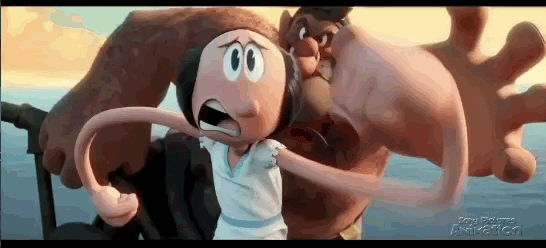
Many student animators want to create a sample of cartoony animation. I see quite a few, and some are more successful than others. The purpose of Comedy for Animators is to bring the art and history of physical comedy into animation education. Recently, I have been reading David Carlyon’s book, The Education of a Circus Clown: Mentors, Audiences, Mistakes.
After serving in the army, and graduating from law school, Carlyon entered Ringling Bros Barnum and Bailey Clown College in Florida. Carlyon and one of his partners created an act and tried it out on fellow students. The other students enjoyed it and laughed. With that encouragement, they decided to present it in class. The teacher for that class was the world-famous clown Lou Jacobs. Here is the author’s quote on how it went:
“When we finished, he said ‘Spaghetti.’ That was Lou’s ultimate criticism. ‘Spaghetti’ meant mugging and flailing, like spaghetti all over a plate.”
That’s a circus clown telling his students they are over-acting. The greatest clowns didn’t jump around like fools all the time. They developed acts over time with careful planning and timing.
Modern character rigs can stretch like never before, and animators want to push them as far as they can. I’ll be the first to admit that rubbery is funny, but it has to be used with some restraint. Let’s take a look at some peak cartoony CG animation, and see what we can learn. Here is Genndy Tartakovski’s test film for a yet-to-be made Popeye feature.
There are a couple of moments where Olive Oil devolves into what could best be described as, well, spaghetti.


However, these actions occur for just a few frames in between two much more stable poses. They are transitional effects as a part of a performance. I have seen live clowns who will go through high energy motion in between poses. If they had the ability to distort their body like this, they would.
There are a few shots where the camera follows Olive around the deck while she tries to crawl away from the gang of pirates. While her arms and legs are very fluid, her body maintains a basic shape.

Here is an animated gif of Olive running. Despite her extreme poses, and a crazy camera move to follow her, note how easy it is to track her face.

It will be way more effective if your animation appears to have been designed with some kind of thought process. Studios want people who can think, not just reproduce what has already been done.
Here are some DOs and DON’Ts for cartoony animation.
DO consider how your audience will perceive the “set up” for the scene. What is driving the cartoony behavior? Does the situation really warrant a character freaking out? If not, then the unmotivated over acting could be considered spaghetti. Or, consider a cartoony style for something other than panic.
DON’T recreate the same huge “takes,” like those in a Preston Blair How to Animate book. Those have been done for decades in cartoons and student demo reels. When they get used over and over again, it diminishes their value. Come up with a fresh idea.
DO create contrast. Energy with stillness. Flexibility with stability. It will help your audience follow what is happening.
DON’T be satisfied with a bunch of compliments on social media. Carlyon and his partner got good reactions from fellow students, but the teacher brought the experienced eye. Always look for criticisms that will help you grow.
DO try to have some sort of resolution. Look at the final frame, and know that is the feeling you will leave the audience with.
If you would like to know more about Lou Jacobs VIST THIS PAGE.

Lou Jacobs teaching at Clown College (with an assist from Bob Momyer, Assistant Dean
in 1976 and ’77) demonstrating the Spider Gag at the Ringling Winter Quarters arena in Venice, FL
